
The annual awards, now in its 44th year, recognizes outstanding products that represent any of the following qualities: a significant advancement in a technology or its application, an exceptionally innovative design, a substantial achievement in price/performance, improvements in design performance, and a potential for new product designs/opportunities.
Here are this year’s winners, selected by the editors of Electronic Products:
- Aceinna (Sensors)
- Atmosic Technologies (Analog/Mixed-Signal ICs)
- Cornell Dubilier Electronics (Passives)
- C&K (Interconnects)
- Fujitsu Components America, Inc. (Electromechanical)
- Insight SiP (RF/Microwave)
- Maxim Integrated Products, Inc. (Power)
- NXP Semiconductors (Digital ICs)
- Osram Opto Semiconductors (Optoelectronics)
- Tektronix, Inc. (Test & Measurement)
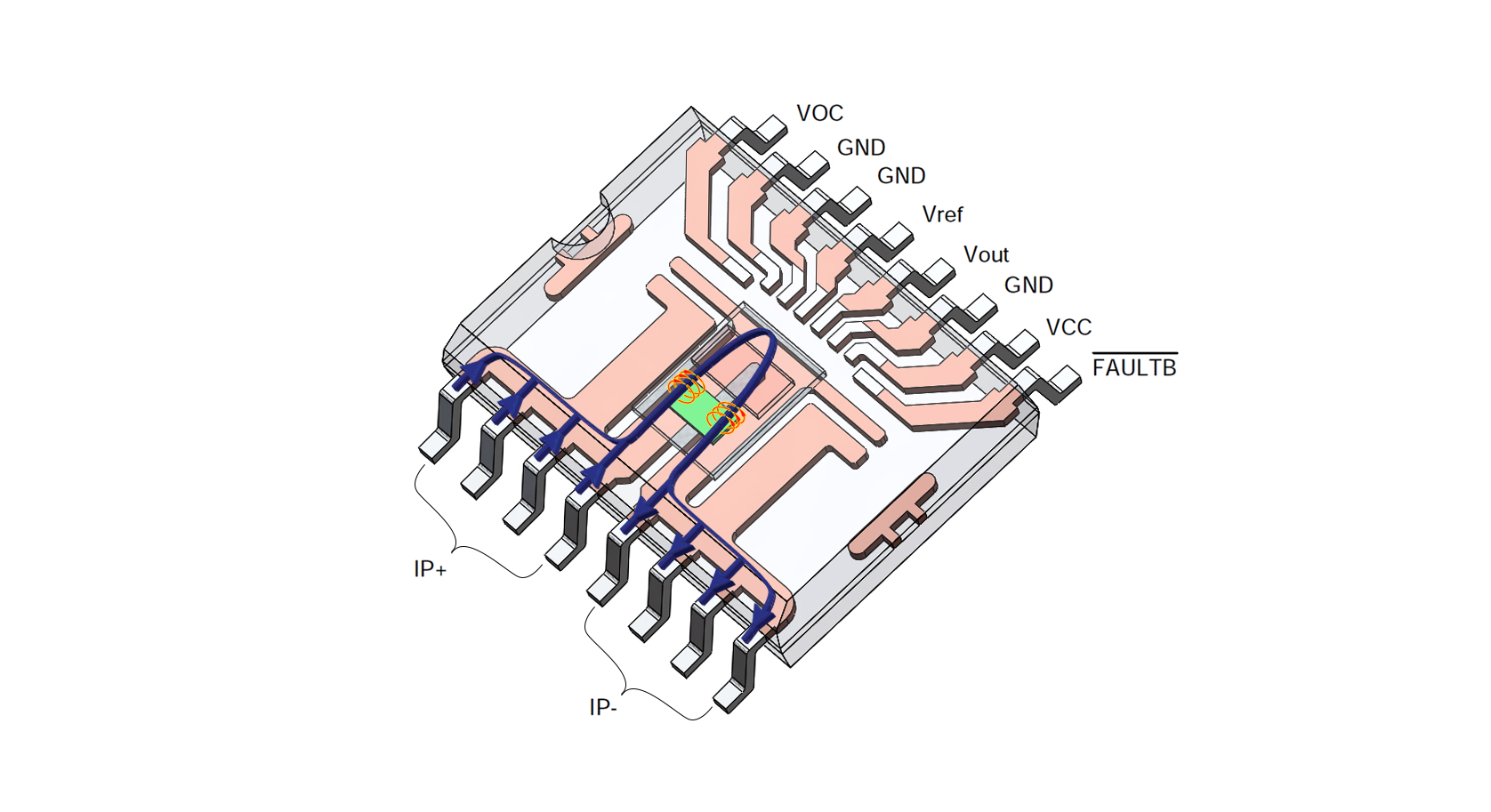
Aceinna
MCx1101 Current Sensors
www.aceinna.com
Aceinna’s MCx1101 fully integrated, bidirectional current sensors claim much higher accuracy and dynamic range over the operating temperature compared with alternative solutions. For example, the ±20-A version offers a typical accuracy of ±0.6% and is guaranteed to achieve an accuracy of ±2.0% (max) at 85°C.
These current sensors also guarantee an offset of ±60 mA, or ±0.3% of FSR (max) over temperature, which means that high accuracy can be achieved over a roughly 10:1 range of currents. This translates into roughly a 10× improvement in dynamic range versus leading Hall-sensor–based devices, said Aceinna.
The combination of high-accuracy, 1.5-MHz signal bandwidth with industry benchmark phase shift versus frequency and 4.8-kV isolation makes the devices suited for high- and low-side sensing in fast current control loops for high-performance power supplies and PFC, inverters, UPS, and motor control applications.
The fast response and high bandwidth also make them suited for fast switching SiC- and GaN- based power stages, enabling power system designers to make use of the higher speeds and smaller components enabled by wide-bandgap (SiC and GaN) switches. Output step response time is 0.3 µs.
The MCx1101 also provides an integrated overcurrent detection flag to help implement overcurrent protection (OCP) required in modern power systems. Overcurrent detection response time is a fast 0.2 µs.
The family includes ±50-A, ±20-A, and ±5-A ranges and is offered in both fixed-gain (MCA1101) and ratiometric-gain (MCR1101) versions. It is packaged in an industry-standard SOIC-16 package with a low-impedance (0.9 mΩ) current path and is certified by UL/IEC/EN for isolated applications.
Touted as the industry’s first “all in one,” easy-to-integrate current sensors for a variety of applications, including inverters and motor control, industrial robots and manufacturing systems, telecom and server farm power supplies, automotive EV charging stations, IoT appliances, and home automation, these anisotropic magneto resistive (AMR)-based current sensors ease integration as a plug-and-play solution.
AMR technology offers several advantages compared to other current-sensing approaches, including Hall, current transformer (CT), and shunt resistors, according to Aceinna. AMR offers significantly higher bandwidth and dynamic range compared to Hall-based current sensors and delivers a smaller size and reduced cost compared to current transformers. As a fully integrated solution, AMR eliminates the need for an external amplifier and related circuitry needed for high-voltage isolation — a challenge at high frequencies — compared to shunt resistors, the company added.
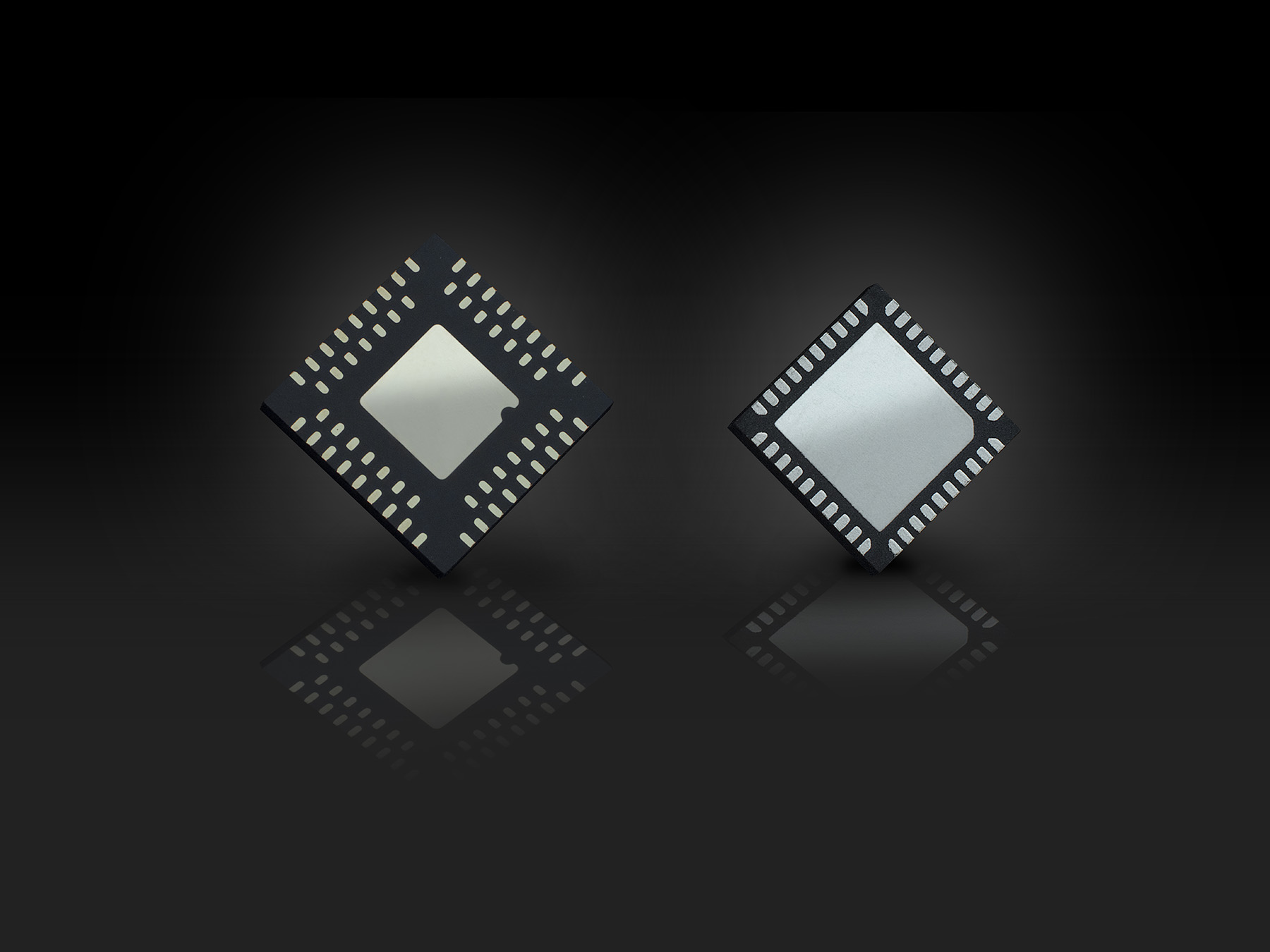
Atmosic Technologies
M3 Battery-Free Bluetooth 5 SoC
www.atmosic.com
Atmosic Technologies claims that the M3 SoC platform offers the industry’s first fully standard compliant and battery-free Bluetooth 5 solution with multi-source energy-harvesting technology. Designed to reduce battery dependence for IoT applications, Atmosic developed three technologies — Lowest Power Radio, On-demand Wake-Up, and Managed Energy Harvesting — all of which are integrated into the M3 Series Bluetooth 5 SoC platform.
With the addition of Atmosic’s Managed Energy Harvesting technology, which can harvest power from different sources, the M3 can deliver forever battery life or battery-free operation in connected devices. The energy-harvesting technology enables the M3 to harvest power from multiple sources: radio frequency, photovoltaic, thermal, and motion.
Thanks to the Lowest Power Radio and On-demand Wake-Up technologies, the M3 enables IoT devices to connect while consuming 10× to 100× lower power than other SoCs, according to the company.
The device provides battery-free operation up to several meters from the RF source while transmitting and receiving Bluetooth 5 signals. The M3 Series can be used in a variety of product applications, such as wearables, asset trackers, beacons, remotes, keyboards, and mice across a range of markets, including home, personal, industrial, health care, smart city, and automotive.
“This product will enable Atmosic’s mission to drive the battery-free IoT revolution with its ultra-low-power technologies that dramatically reduce energy usage so connected devices can operate completely battery-free (using energy-harvesting technology) or with batteries that last significantly longer,” said the company. “Atmosic’s M3 will enable a battery-free IoT era, reducing the environmental impact of batteries and decreasing the cost and resources of battery maintenance, benefiting the planet, consumers, and industrial users.”
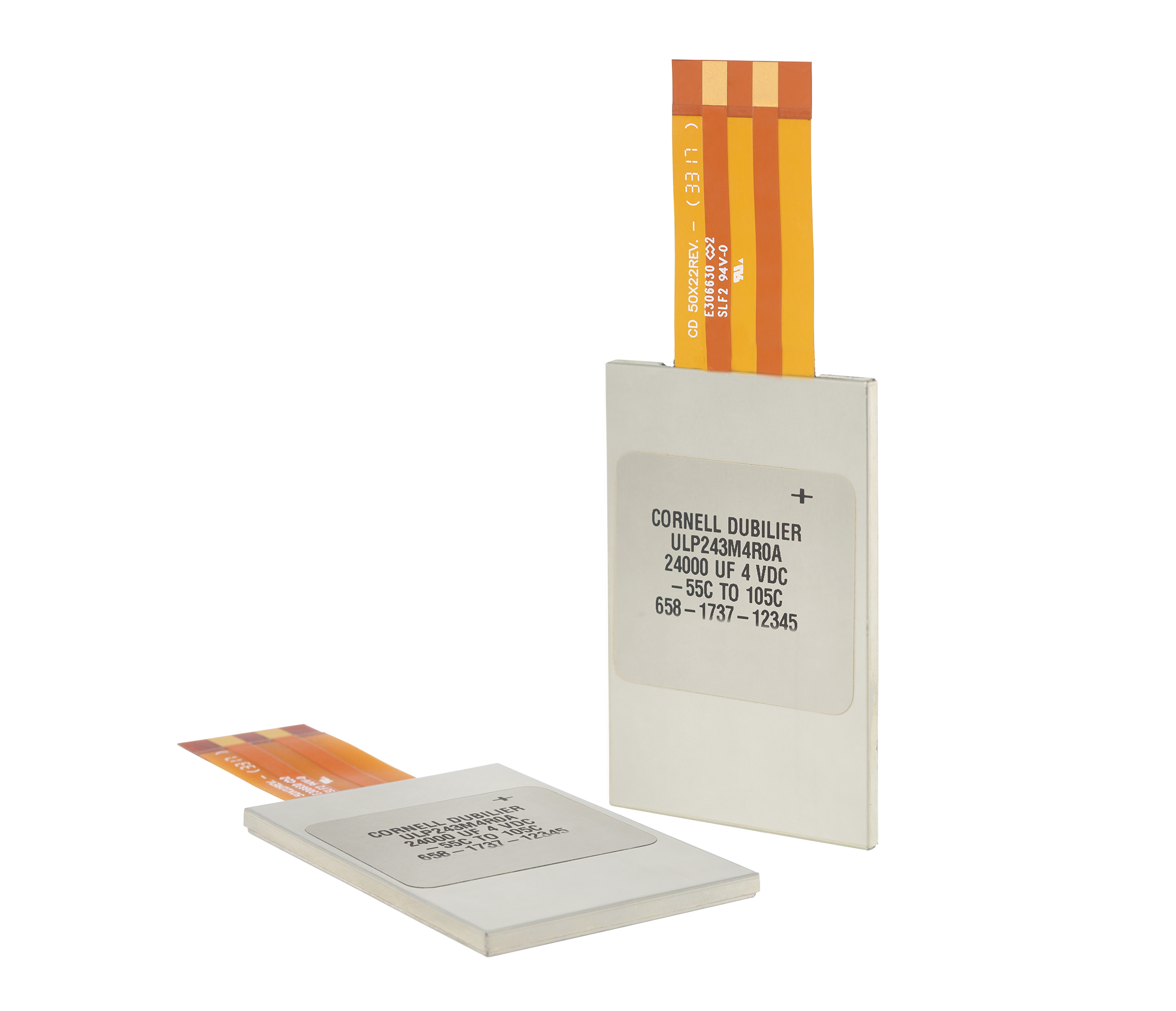
Cornell Dubilier Electronics
ULP Series of Ultra-Low-Profile Aluminum Electrolytic Capacitors
www.cde.com
Cornell Dubilier Electronics (CDE) has developed an ultra-low-profile family of aluminum-electrolytic capacitors that can replace large arrays of surface-mount (SMT) capacitors. Called a “game changer” for engineers designing compact electronic devices, the ULP series is designed specifically for applications requiring bulk capacitance and the lowest board profiles and offers considerably higher energy density than arrays of SMT capacitors. This design allows engineers to use a single component to save space, weight, and cost while improving reliability.
“With energy density exceeding 0.4 J/cc, a single ULP capacitor provides much greater bulk storage in a smaller footprint than a bank of low-profile SMT capacitors,” claimed Mario DiPietro, CDE’s product manager. “The technology is particularly effective at displacing parallel banks of SMT solid tantalum capacitors to achieve high capacitance on the board.”
Capacitance values range from 500 µF to 24,000 µF. Working voltages range from 4 to 63 WVDC with an operating life of 3,000 hours at 85°C without voltage derating. Unlike solid tantalum capacitors, type ULP capacitors do not require voltage derating, said CDE.
The ULP family is offered in package heights of 2.2 mm and 3.2 mm. With flat ribbon-lead–style terminations, it is even possible to mount the device off-board for added design flexibility. These capacitors are suitable for use in portable devices and a wide range of applications in which height profile, board space, and weight are critical design factors.
The 2.2-mm thin part is available with up to 7,800 µF; the 3.2-mm part is rated at up to 24,000 µF. Both have voltage ratings from 4 to 63 WVDC, depending on capacitance.
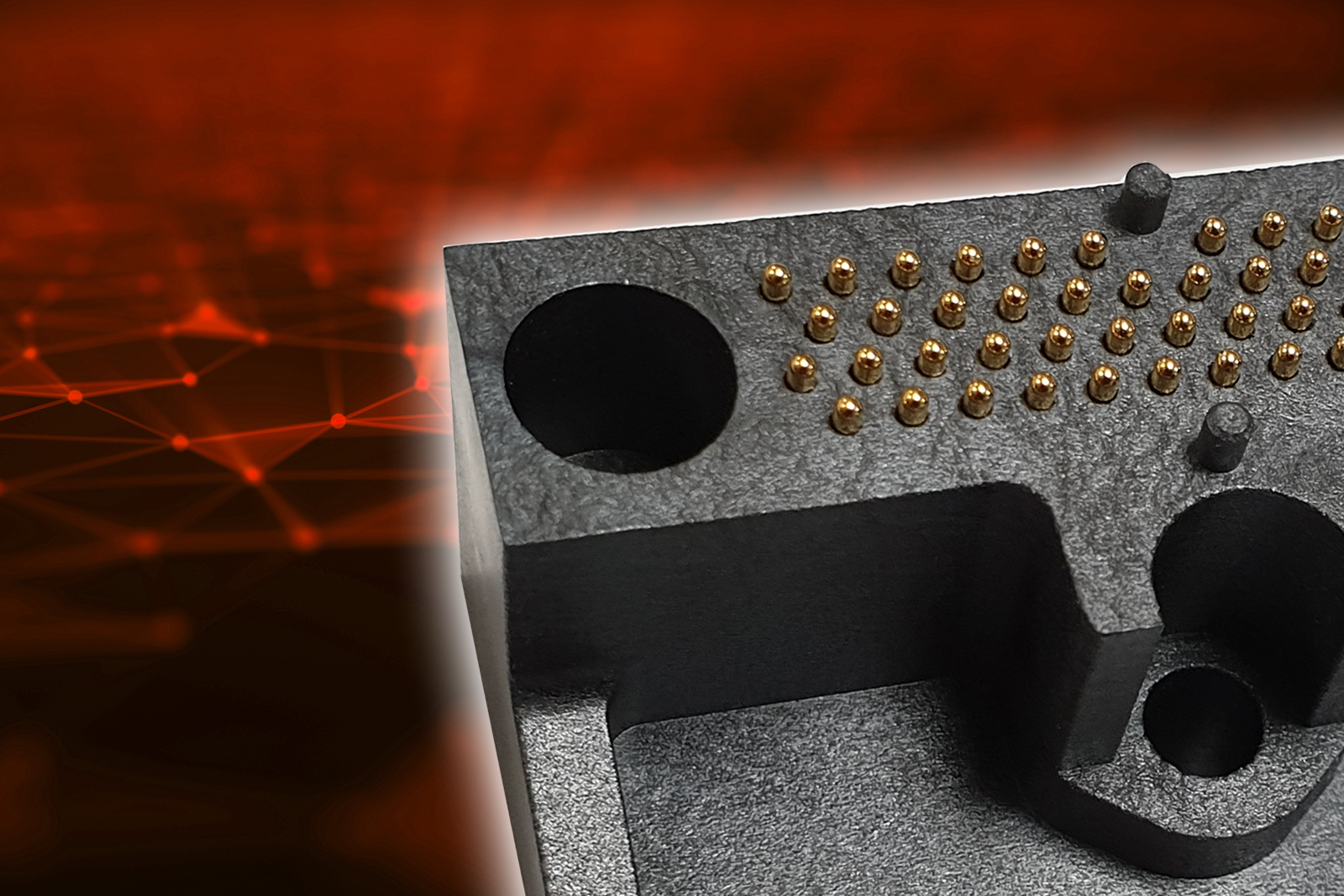
C&K
Interposer
www.ckswitches.com
C&K’s Interposer provides a solderless and customizable way of connecting two PCBs, specifically for high-reliability aerospace applications. A key feature is the spring-load contacts that enable easy, solderless installation and removal. This provides a direct connection, which eliminates the need for a wired solution, easing design and integration.
For greater design flexibility, C&K has created an easy-to-use “build an interposer” concept. This enables customers to mix and match options to create the interposer they need for their particular application.
The interconnect uses the company’s Starclip contact technology. This means that the electrical contact function is decoupled from the pressure applied by the spring, which enables the connector to provide a stable, low-contact resistance, regardless of the force applied or distance moved, said C&K.
Key specifications include a minimum distance between the two contacts of 1.27 mm and a minimum height of 8 mm. Contact resistance is a low 25 mΩ, with a rated current of 1.5 A, and a working voltage of 100 or 200 Vrms.
The interconnects are non-outgassing, with gold-plated contacts, and offer an operating temperature range of –55°C to 125°C. They are compliant with CS FR051 C&K specification, according to ESA/ESCC code 3401. Applications include space equipment, satellite payloads, high-performance avionics/military, and engineering test equipment.
Fujitsu Components America, Inc.
FTR-K5 Series Automotive Relay
www.fujitsu.com/us
Fujitsu Components America, Inc. offers a 6.6-kW (32-A to 250-VAC) switching automotive relay for on-board battery chargers in electric and plug-in hybrid vehicles (EVs/PHVs). The FTR-K5 1 Form A PCB relay assists with faster EV/PHV battery charging while also meeting automotive-vibration and shock-resistance specifications. It also provides a 105°C temperature rating and 8-mm insulation distance between coil and contact, which exceeds any currently available power relay in this class, according to the company.
The relay features a 5,000-VAC withstand voltage between coil and contact and 1,000 VAC between adjacent contacts. Despite its low, 900-mW power consumption, the relay can sustain a 40-A continuous power supply (without switching).
The FTR-K5 series is available in either a flux-free or plastic-sealed enclosure. With a life of 30,000 operations, Fujitsu recommends the flux-free type for sealed charger units. The plastic-sealed type offers a higher resistance to dust and exhaust gas, making it suitable for non-sealed charger units. Samples are available with volume production expected to begin in March 2020.

Insight SiP
ISP4520 Combo RF Module
www.insightsip.com
Insight SiP launched the ISP4520, a combined Bluetooth Low Energy (BLE) and LoRa combo module with dual integrated antennas. By integrating the BLE and LoRa radio functionality, the module offers a unique solution, combining the short-range high-throughput capability and smartphone/PC access of BLE, together with the long-range features of LoRa technology.
While BLE gives a higher bandwidth channel for the device, which can be used for commissioning, software updates, maintenance, or to connect a set of local sensors to a central hub, LoRa technology offers a low-cost, wide-area networking solution for IoT applications, typically in use cases requiring a limited data rate and a long-term battery-powered operation, said the company. LoRa can operate via public networks and private networks.
The module uses Insight SiP’s patented “Antenna in Package” technology together with its advanced system-in-package design approach to embed both BLE and LoRa antennas into an ultra-small device measuring only 9.8 × 17.2 × 1.7 mm. The company said that it is the smallest device of its type on the market.
The BLE part of the ISP4520 integrates the WLCSP nRF52832 chip from Nordic Semiconductor and uses Insight SiP’s existing BLE product range. It is a fully featured BLE device with integrated 32-MHz/32-KHz crystals, RF antenna and matching circuit, and DC/DC converter, delivering maximum power-saving efficiency.
The ISP4520 device also includes an Arm Cortex M4F processor with 512-KB flash and 64-KB RAM. This provides the designer with a large application space, even allowing for the BLE and LoRa protocol stacks. A full set of interfaces is supplied for analog or digital peripherals, including 30 GPIOs, an analog-to-digital converter, and SPI, I2 C, and UART buses. It also provides NFC connectivity for easy pairing.
The LoRA radio is based on a Semtech SX126x chipset (different variants being proposed for different markets). The Semtech chip is driven via the Arm Cortex M4F of the Nordic device.
The module is designed for battery-based operation. It is equipped with a range of deep-sleep modes for a variety of requirements. Standby current is as low as 0.5 µA.
The module is compatible with the LoRaWAN open standard developed by the LoRa Alliance and runs the Nordic Bluetooth soft device, which now supports a full Bluetooth V4.2 stack and is Bluetooth 5.0-ready.
Module prototypes and a development kit are available, with mass production expected to start in Q2 2019. Certification is pending.
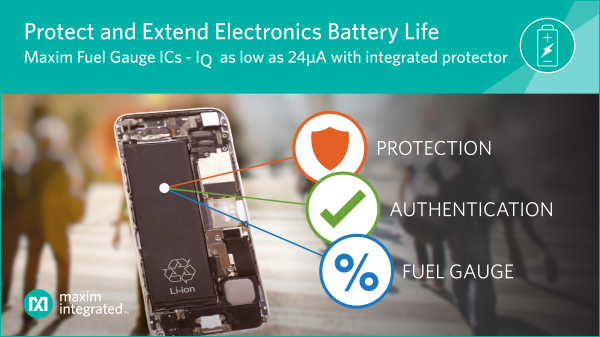
Maxim Integrated Products, Inc.
MAX17301/11 Fuel-Gauge ICs
www.maximintegrated.com
Touting the most advanced battery protector with the highest level of safety and lowest quiescent current, Maxim Integrated Products, Inc. claims that the MAX17301 and MAX17311 fuel-gauge ICs offer the most configurable settings for battery safety in the industry and uniquely allow fine-tuning of voltage and current thresholds based on various temperature zones.
In addition, Maxim said these ICs also offer a first-of-its-kind secondary protection scheme in case the primary protection fails. This secondary protection scheme permanently disables the battery by overriding a secondary protector or blowing a fuse in severe fault conditions.
All ICs in the family use Maxim’s patented ModelGauge m5 EZ algorithm that delivers high state-of-charge (SOC) accuracy that, on average, offers 40% better accuracy than competitive offerings and eliminates the need for battery characterization, according to the company. These fuel gauges also claim the industry’s lowest quiescent current (IQ) — up to 80% lower than the nearest competitor — and feature SHA-256 authentication to protect the systems from counterfeit batteries.
These devices provide the highest SOC accuracy, said Maxim, without requiring battery characterization, eliminating several weeks of time required for sending a battery to a lab for characterization and analysis.
“Conventional battery protectors monitor voltage and current and, in some cases, include temperature monitoring,” said Maxim. “These options make the system vulnerable to unexpected crashes because battery SOC isn’t factored in when triggering an undervoltage cutoff decision. The market lacks a solution that allows deeper configuration of voltage or current thresholds based on multiple temperature environments. With a growing market of battery-operated applications, there is a need for a simple, compact solution that protects from unsafe charging conditions that can lead to extensive battery damage including overvoltage, short-circuit, over-/undertemperature, and more.”
The MAX17301 and MAX17311 fuel gauges are one-cell fuel gauges that offer two-level Li-ion protection, providing an additional layer of security in case the primary protector fails. All ICs in the family offer unique low-state–based protectors as an alternative to simple low-voltage thresholds, which prevents nuisance tripping in the case of short duration voltage dips due to pulse loads on the battery.
Key advantages include:
- Advanced battery protection: Ensures safe charging and discharging in a wide range of applications with two-level Li-ion protector control for abnormal voltage, current, and temperature conditions. Delivers protection against counterfeiting and cloning with SHA-256 authentication and provides unique as well as dynamic key for every battery.
- Highest accuracy: Delivers best-in-class SOC accuracy without battery characterization. Cycle and age forecasting provide easy-to-understand prediction of remaining battery life for battery replacement planning or to control fast charging. Battery life logging stores the history of operating conditions experienced by the pack over its lifetime.
- Lowest IQ: Supports long product shelf life and runtime with an operating IQ of 24-µA active/18-µA low power with protector FETs on and 7 µA with protector FETs off.
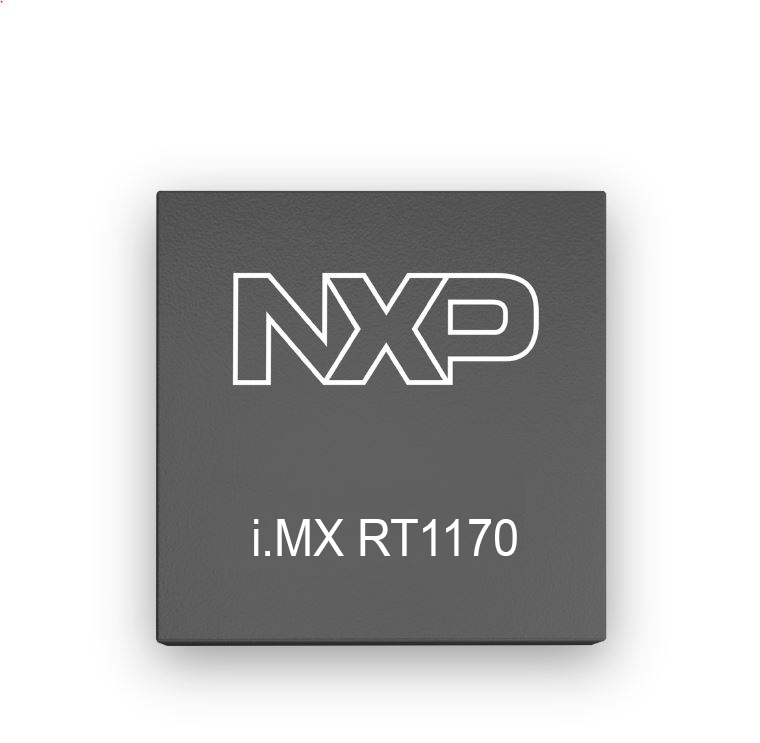
NXP Semiconductors
i.MX RT1170 Crossover MCUs
www.nxp.com
The i.MX RT1170 crossover microcontrollers (MCUs) from NXP Semiconductors mark a technology breakthrough with MCUs — breaking the gigahertz barrier by running up to 1 GHz while maintaining low-power efficiency. It delivers a record-setting performance, 6468 CoreMark score, and 2974 DMIPS while executing from on-chip memory. In addition, it uses advanced 28-nm FD-SOI technology, making NXP the first company to build MCUs in this advanced technology node.
Other features include:
- Dual-core architecture: Arm Cortex-M7 up to 1 GHz, Cortex-M4 up to 400 MHz
- 2D vector graphics core
- NXP’s pixel processing pipeline (PxP) 2D graphics accelerator
- EdgeLock 400A, NXP’s advanced embedded security technology
Accelerating advanced machine-learning (ML) applications at the edge, NXP said that the new MCU family is redefining the “edge” and MCU landscape — bringing unprecedented performance and high levels of integration for industrial, IoT, and automotive industries.
For edge compute applications, the GHz Cortex-M7 core significantly enhances performance for ML; edge inference for voice, vision, and gesture recognition; natural-language understanding, data analytics, and digital-signal-processing (DSP) functions.
The combination of gigahertz performance and high density of on-chip memory speeds up face-recognition inference time by up to 5× compared to today’s fastest MCUs in the market, in addition to having processing bandwidth to improve accuracy and immunity against spoofing, said NXP. It also allows for efficient execution of computational demanding voice recognition, including audio pre-processing (echo cancellation, noise suppression, beamforming, and barge-in) for improved cognition.
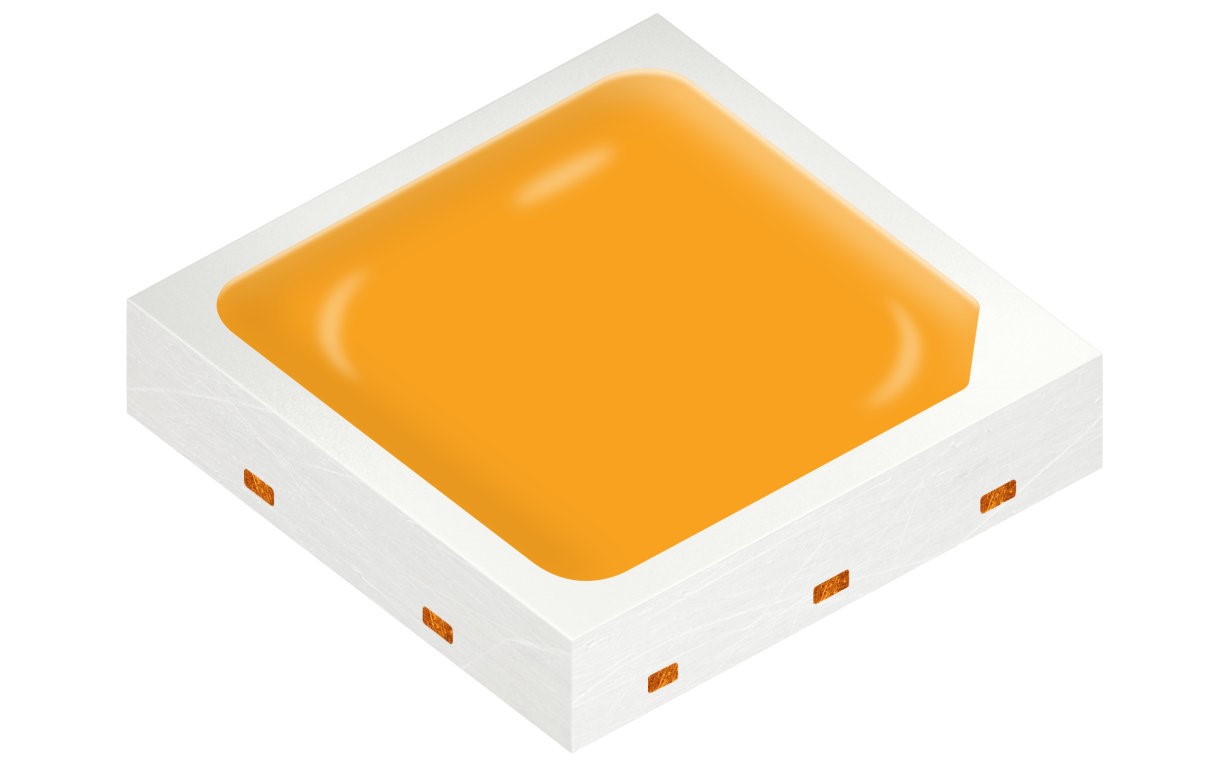
Osram Opto Semiconductors
Osconiq S 3030 QD Mid-Power LED
www.osram.com/os
Quantum Dots (QD) tunable light conversion technology is being used for the first time in the Osconiq S 3030 QD mid-power LED from Osram Opto Semiconductors. The company said it marks the first step toward new LED components for the general lighting market. QDs are nanometer-sized semiconductor particles, about 10,000× smaller than the diameter of a human hair.
Designed to deliver high efficacy and excellent color rendering in area lighting and downlight applications, the mid-power LED includes a specially developed QD phosphor solution that enables CRI 90 to achieve an outstanding efficacy value of 173 lm/W at 3,000 K — a best-in-class value for 0.2-W high-performance LEDs. The LED is also available in various color temperatures from 2,700 to 6,500 K and is housed in a 3 × 3-mm package.
Osram said that its PLT QD technology, through its acquisition of Pacific Light Technologies (PLT), enables the company to begin to close the efficacy gap that exists between CRI 80 and CRI 90 LEDs today. Another unique feature of the PLT QD technology, said Osram, is that the Quantum Dots are encapsulated to protect them from moisture and other external influences that pose the greatest risk to LED functionality.
In addition, manufacturers can use their existing LED-manufacturing processes. QDs are used instead of conventional phosphors when the converter material is applied.
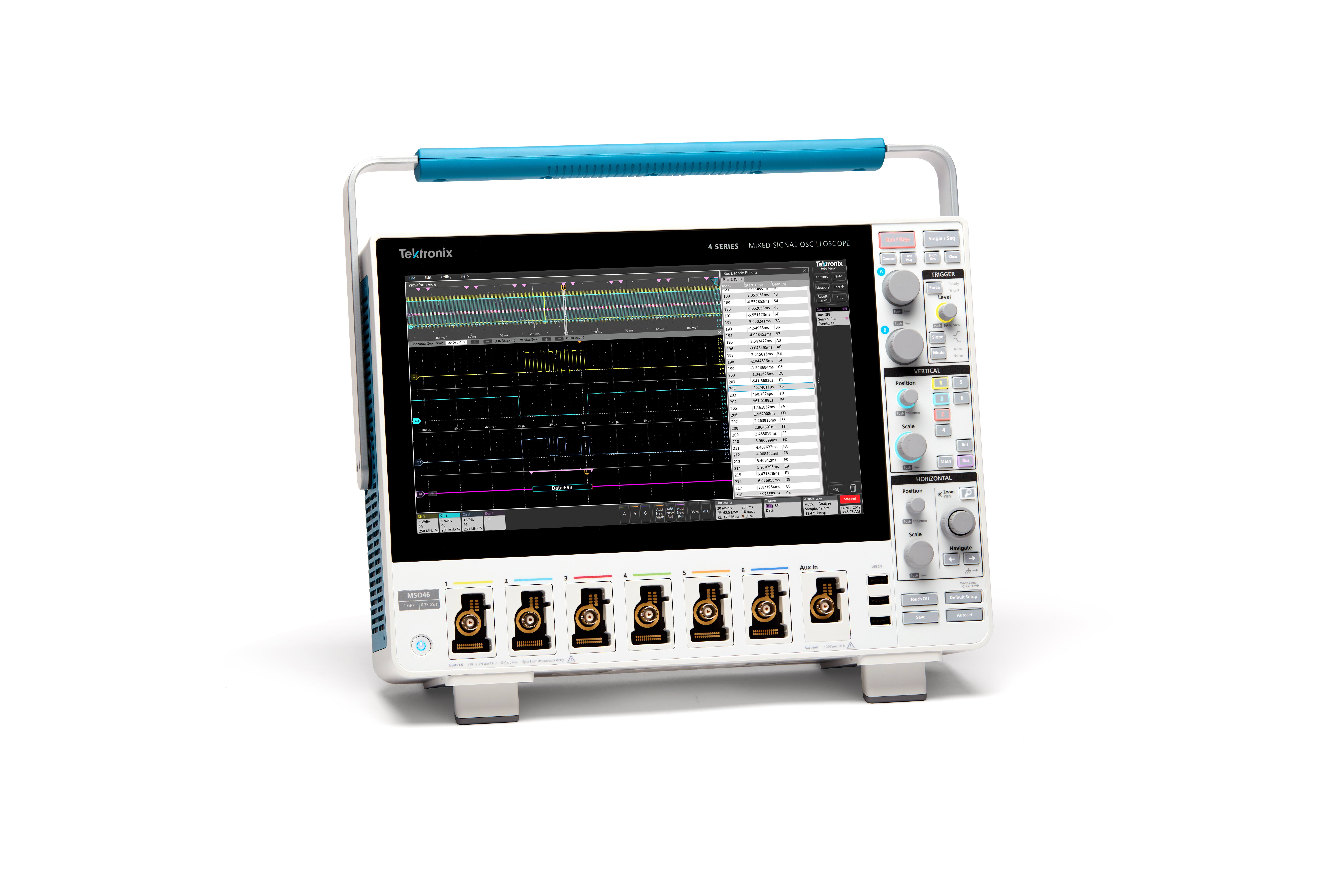
Tektronix, Inc.
Tektronix 4 Series Mixed-Signal Oscilloscope
www.tek.com
Designed to meet a variety of workloads seen by embedded systems engineers, Tektronix designed the new scopes to be highly flexible and easy to use. Offering the largest HD touch display and highest available channel count — up to six flex channel inputs — in its class, the Tektronix 4 Series mixed-signal oscilloscope (MSO) features a 13.3-in. touchscreen display with 1,920 × 1,080 HD resolution. It offers bandwidths up to 1.5 GHz and uses 12-bit ADCs for the highest vertical resolution in its class.
Tektronix claims that it is the first scope in this class to offer six input channels, and with the FlexChannel technology, any input channel can be converted from an analog to eight digital channels just by connecting a logic probe. Many applications, such as embedded systems, three-phase power electronics, automotive electronics, power supply design, and DC-to-DC power converters, require the observation of more than four analog signals to verify and characterize device performance and to debug challenging system issues, said the company.
The 4 Series MSO offers better visibility into complex systems by offering four- and six-channel models with a 13.3-inch HD display. “Most engineers can recall situations in which they were debugging a particularly difficult problem and wanted greater system visibility and context, but the scope they were using was limited to two or four analog channels,” said Tektronix. “Using a second scope involves significant effort to align trigger points, difficulty in determining timing relationships across the two displays, and documentation challenges.”
There is also a price benefit: The six-channel 4 Series MSO models cost only about 20% more than four-channel models. “The additional analog channels can pay for themselves quickly by enabling engineering teams to keep current and future projects on schedule,” said Tektronix.
To meet a diverse range of application requirements, the 4 Series MSO is available with bandwidths starting at 200 MHz and comes with a variety of options including serial decode and analysis, an arbitrary function generator, and a DVM/frequency counter. The Spectrum View feature offers time-correlated frequency domain analysis with independent spectrum controls. A power analysis package is available to automate AC line, switching device, ripple, and sequencing measurements.
Bandwidth and options are all field-upgradeable. All models deliver a 6.25-GS/s sample rate on all analog and digital channels. Standard record length is 31.25 Mpoints with an option for 62.5 Mpoints.
Advertisement
Learn more about C&K ComponentsCornell DubilierFujitsu Components AmericaMaxim IntegratedNXP SemiconductorsOsram Opto SemiconductorsTektronix








